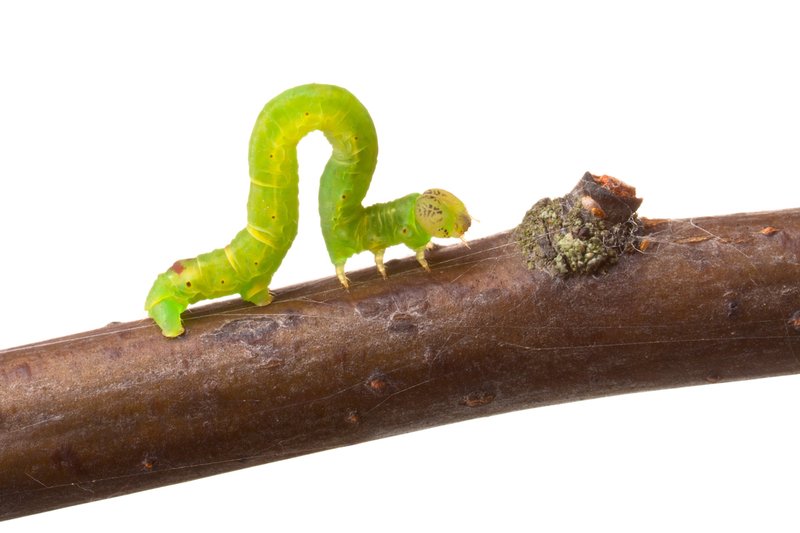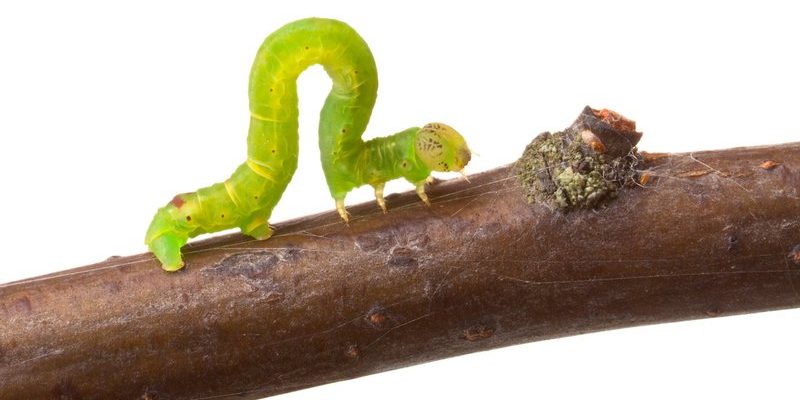
Inchworms, which are actually the caterpillar stage of various moths, depend on trees and plants for food. Just like a picky eater who gravitates towards their favorite dish, these caterpillars show preferences for specific tree species. Knowing what they like can help us cultivate healthier gardens and manage our landscapes better. Let’s explore this fascinating topic together!
What Exactly Are Inchworms?
Before diving into their tree preferences, let’s take a moment to understand what inchworms are. These little critters belong to the Geometridae family of moths. They’re called inchworms because of their unique way of moving—contracting and extending their bodies, which makes them look like they’re measuring the distance they cover.
You might be wondering why these caterpillars are important. Aside from being a food source for birds and other wildlife, inchworms play a role in the food web. They help break down plant materials and contribute to soil health. It’s nature’s way of recycling nutrients!
Interestingly, inchworms are quite common in many regions, particularly during spring and summer. They thrive in areas with plenty of trees and greenery, which leads us to the next part of our discussion—the trees they love best.
Which Trees Do Inchworms Prefer?
Inchworms tend to gravitate towards certain tree species, mostly because of the leaves they munch on. Some of the most common trees that attract inchworms include:
- Oak Trees: Many species of inchworms enjoy oak leaves. The broad leaves provide plenty of surface area for these caterpillars to feast on.
- Maple Trees: Inchworms love the tender, young leaves of maple trees. The sweet sap is like a dessert for them!
- Birch Trees: Birch leaves are another favorite. Their slightly crunchy texture and abundant foliage make them a prime choice.
- Pines: Some inchworm species are also drawn to pine trees, especially the softer needles.
Each of these trees offers a unique set of nutrients and vegetation types that inchworms find appealing. If you’ve got any of these trees in your yard, keep an eye out! You might see inchworms making their rounds.
Why Do Inchworms Prefer Certain Trees?
Now, you might be thinking, “Why are they so picky?” The answer lies in nutrition and survival. Inchworms need specific nutrients to grow and thrive. Different trees provide different levels of protein, moisture, and other vital elements that cater to their dietary needs.
For example, oak trees are particularly rich in the nutrients that inchworms crave. The leaves are tender and high in nitrogen, which helps caterpillars grow quickly and develop into healthy moths. Similarly, maple trees release sap that not only nourishes the inchworms but also attracts them with its sweet scent—like a siren call!
In addition to nutrition, environmental factors also play a role. The structure and texture of leaves on certain trees make them easier for inchworms to munch. Softer leaves are typically easier to digest, while tougher leaves might be less appealing.
How Do Inchworms Affect Trees?
While inchworms might seem harmless, they can sometimes cause issues for the trees they feed on. When they munch on leaves in large quantities, they can defoliate trees, which means they strip them of their leaves. This can weaken the tree, making it more susceptible to disease and pests.
However, it’s worth noting that not all inchworm populations cause significant damage. In a healthy ecosystem, they often exist in balance. If you’ve noticed a few inchworms here and there, it’s usually not a reason to panic. But if you see heavy infestations, it might be time to take action.
Some natural predators, like birds and other insects, help keep inchworm populations in check. This balance is crucial for maintaining a healthy environment. Remember, every creature, no matter how small, plays a role in nature’s grand design.
Managing Inchworm Populations in Your Garden
If you love trees but find that inchworms are doing a number on your foliage, don’t worry! There are several strategies to manage their populations without resorting to harmful chemicals. Here are a few eco-friendly options:
- Encourage Natural Predators: Attract birds and beneficial insects to your garden. Birds love to snack on inchworms, and ladybugs can help control other pests.
- Handpicking: If you see large numbers of inchworms, you can handpick them off your trees. Just remember to wear gloves!
- Neem Oil: This natural pesticide can deter inchworms if applied according to package directions.
- Plant Diversity: Having a variety of plant species in your garden can help reduce inchworm attraction by providing diverse food sources.
These methods not only help keep your trees healthy but also promote a vibrant ecosystem in your yard. Gardening should be about harmony, and every little step counts!
So, are inchworms attracted to certain tree species? You bet they are! These tiny caterpillars have specific tastes that lead them to favorite trees like oaks, maples, and birches. Understanding this relationship helps us appreciate the role that inchworms play in our gardens and ecosystems.
Whether you’re a tree lover or a garden enthusiast, knowing what attracts inchworms can help you cultivate healthier plants and manage any challenges that come your way. Remember, nature is all about balance. Embrace the beauty of inchworms while also keeping an eye on your trees. By nurturing this connection, we can enjoy both the wonders of nature and the health of our landscapes.

